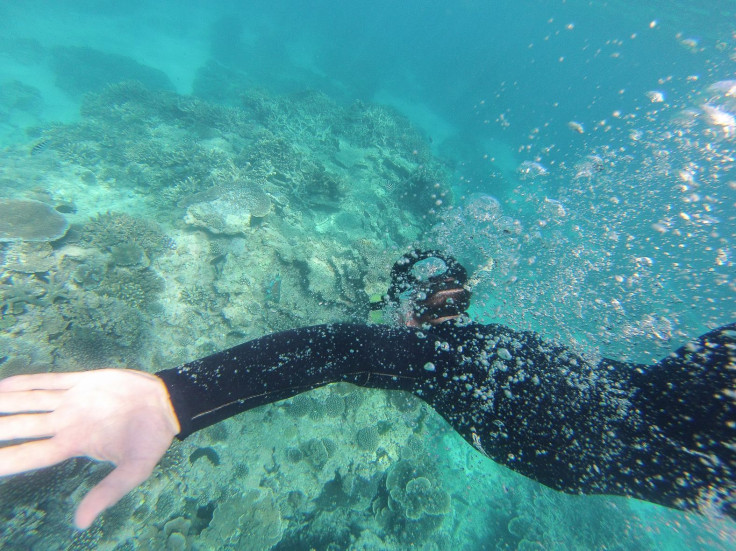Venomous Olive-Headed Sea Snakes Found By Snorkeling Grandmothers Near Australia

An adventurous group of grandmothers discovered a large population of dangerous sea snakes off the coast of the French island of New Caledonia in the southwest Pacific Ocean.
The grandmothers made the discovery during their regular swimming trip in the bay New Caledonia’s capital city, Noumea. While snorkeling, they discovered a large population of the venomous olive-headed sea snake near the bottom of Noumea’s bay.
The group got in touch with Dr. Claire Goiran from the University of New Caledonia and Professor Rick Shine from Macquarie University in Australia, who were nearby studying turtle-headed sea snake in Noumea’s Baie des Citrons.
“The study zone is in the most touristic bay in Noumea, so I often meet people when I am doing field work on sea snakes,” Goiran told The Guardian. “When I was snorkeling on my own studying sea snakes, I used to meet a friend of mine called Aline that was snorkeling and taking photos on the same reef. In order to help me, she started taking photos of sea snakes and would send them to me by mail.”
Goiran and Shine explained the grandmothers’ find comes as a surprise, as the snake had only been seen six times over 15 years.
“Remarkably, the grandmothers found a large number of lethally toxic sea snakes in a small bay that is occupied every day by hordes of local residents and cruise‐ship passengers – yet no bites by the species have ever been recorded at Baie des Citrons, testifying to their benevolent disposition,” Shine said.
The doctors also explained the findings show how important the olive-headed sea snakes are to the local ecosystem. While there isn't significant evidence, they suggest snakes help in cycling nutrients through the local coral reefs.
© Copyright IBTimes 2025. All rights reserved.





















